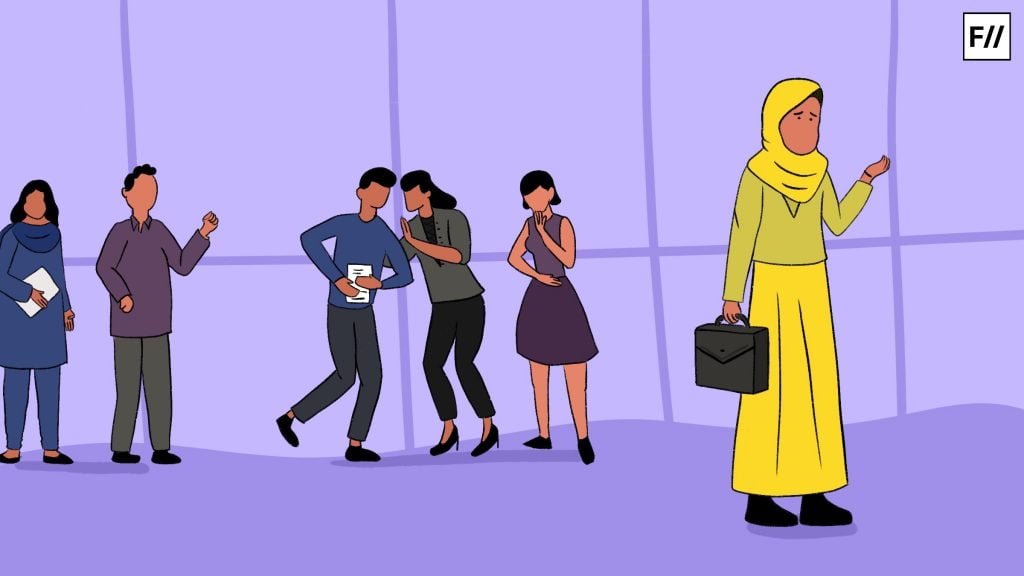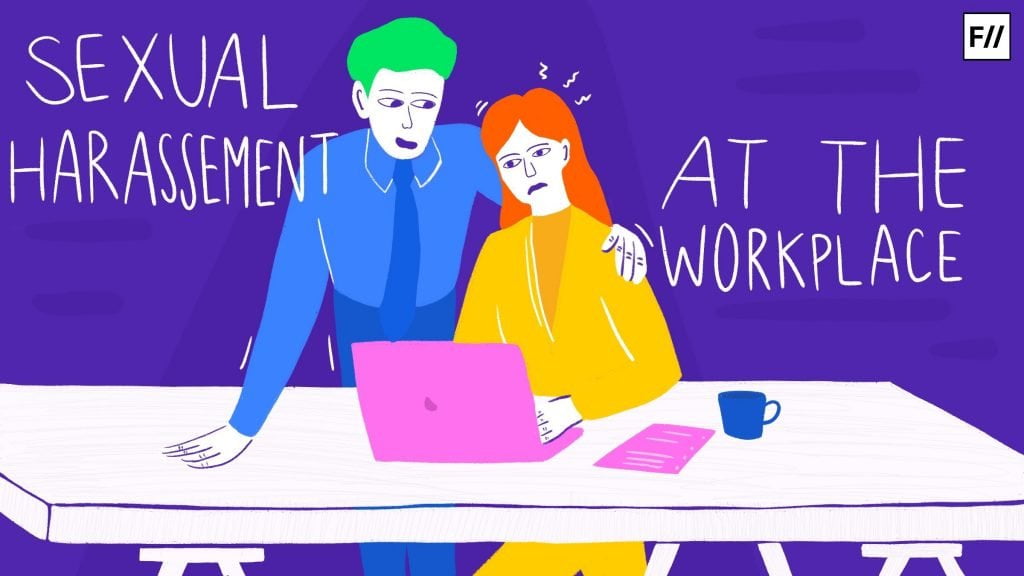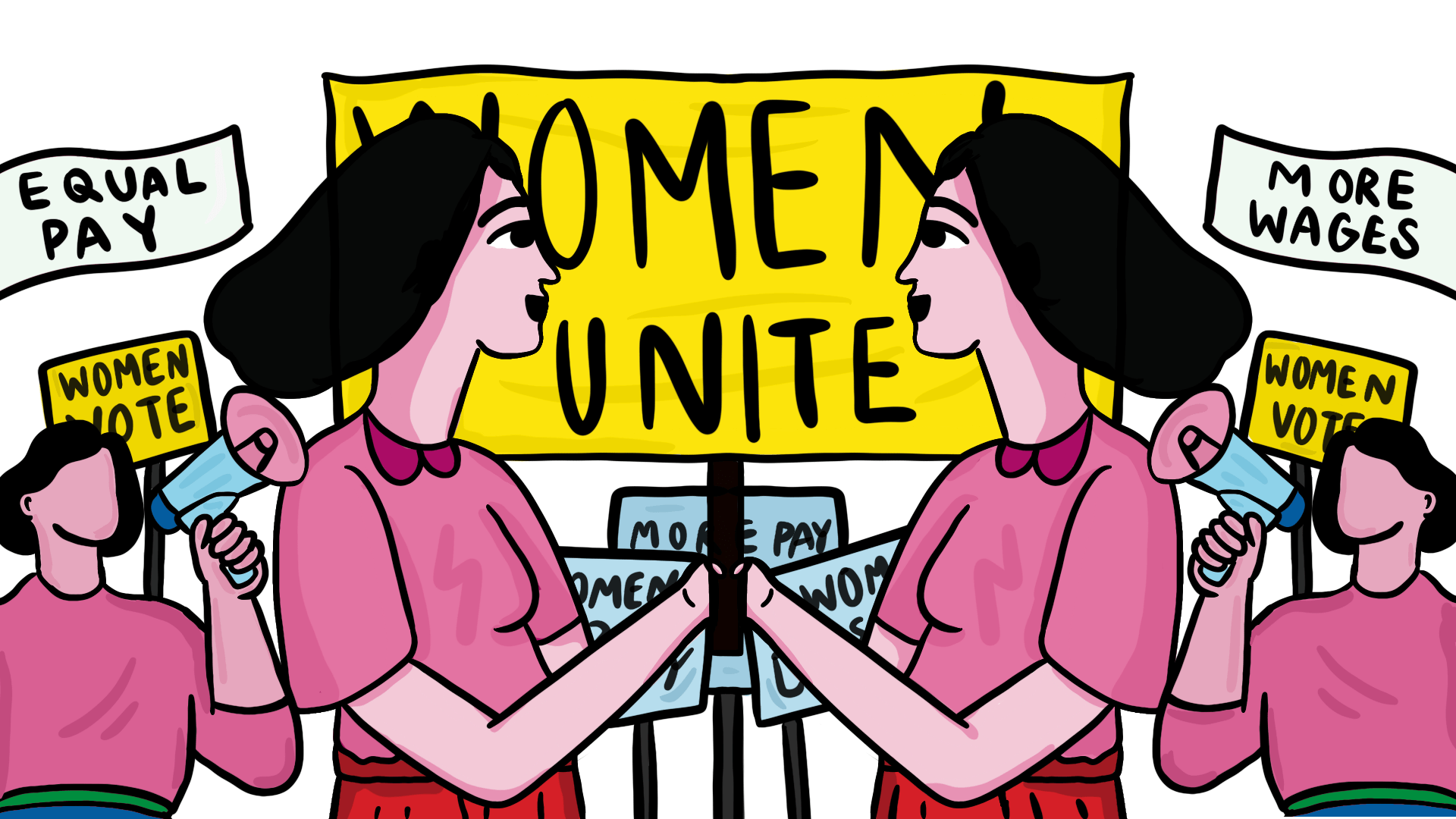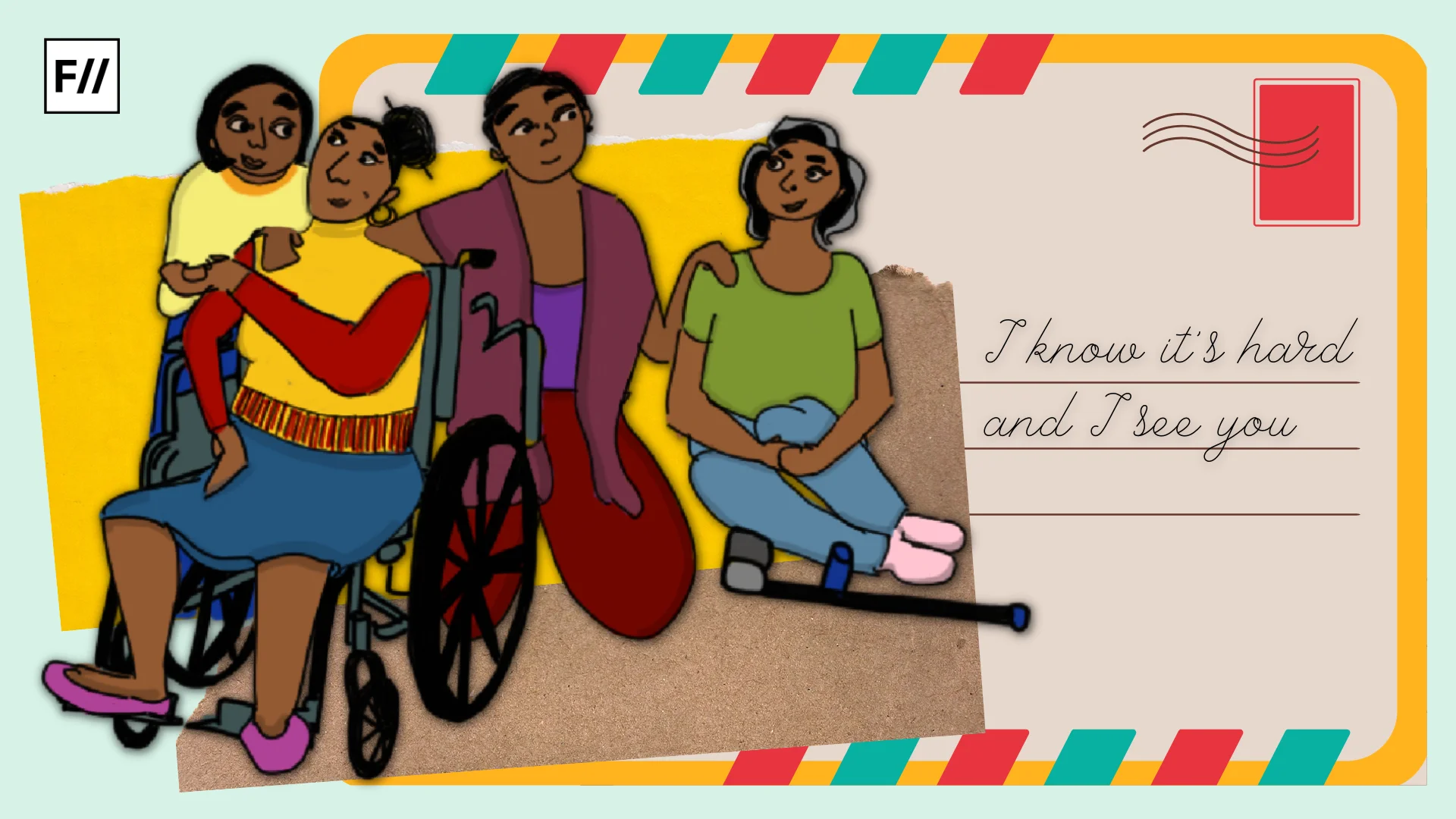Any public institution, such as our workplaces, claims to be a gender-neutral place. However, studies have shown that they have developed in a deeply gendered manner, incapable of catering to the different needs of women and other marginalised genders. Keeping this in mind, this article tries to understand to what extent the workplace is able to cater for the different needs of women and what is the perception of the employees regarding the gender inclusiveness of their workplaces.
I conducted a survey via Google form on the male and female employees of the formal sector, and in total, I received 224 (141- female, 82 – male and 1 – others) responses. Given the sensitivity of certain questions, the names and email addresses of the respondents were not collected. The responses to the questions are based on individual perceptions.
Any public institution, such as our workplaces, claims to be a gender-neutral place. However, studies have shown that they have developed in a deeply gendered manner, incapable of catering to the different needs of women and other marginalised genders.
In the case of gender distribution in workplaces, 45% of them responded that they have an almost equal number of men and women employees, while only 18% of them said that gender distribution is skewed more towards women, while the rest, 37%, felt the distribution is skewed more towards the men in their organisation.

It is interesting to note that, in the highest income group( more than 50000 per month), the highest percentage of people responded (almost 42%) have responded that the gender distribution in the office is skewed mostly towards men, and only 14% said it is skewed towards women, the lowest as compared to any other income group.
This could be an indication of how women, even when they are able to participate in the labour market, higher income jobs or positions are still dominated by men while the former is stuck in lower-paying jobs due to several social and cultural biases and constraints. However, in the case of female leadership representation in all the income categories, almost 70% of them reported the presence of female leaders; it is clear that in higher income groups, although women are taking up a leadership positions, they are not able to alter the overall dominance of men in these group.
This could be an indication of how women, even when they are able to participate in the labour market, higher income jobs or positions are still dominated by men while the former is stuck in lower-paying jobs due to several social and cultural biases and constraints.
Along with the different barriers that women face while entering the labour market, even after being a part of various workplaces, the discrimination continues. Several studies have shown how women have suffered from wage discrimination, denied promotion and the like. Although ensuring equality of opportunity in the labour market is a far-fetched dream for women in India, even achieving that is not enough for gender equity.
The equalisation of the agency requires the recognition of different needs, bodies and values that women and other marginalised gender bring into the workplace. Problems of sexual harassment, the need for separate toilets, the provision of paid leaves to have children, and menstrual leaves have become a “concern” for the organisations that traditionally favour men. However, recognition of difference rather than similarity forms the basis of achieving gender equity.

Sexual harassment in the workplace remains one of the most underreported forms of gender discrimination. Given the historical judgment of Vishaka and others V/S the state of Rajasthan in 1997, it was made mandatory for the employer to constitute an internal complaints committee (ICC) in their organisations. Even in the case of unorganised sectors (for example, domestic workers: a vast majority of Indian women are involved in this), it is mandatory to form a local complaints committee if there is no internal complaints committee.
In this survey, only 40% of the women respondents said they had adequate information about the function of ICC and Vishakha guidelines. In 37% of the cases, the respondents report they are not aware of the existence of ICC or any other sexual harassment redressal committee in their organisations.
In most cases, especially in private sectors, these exist only on paper and employees are not made aware of it; among the 142 respondents who reported the existence of ICC in their workplaces, almost 27% of them never even received any official orientation about the functioning and the responsibilities of the committee.
It is to be noted that in various organisations, complaints of sexual harassment (if at all raised ) go directly to the HR department, which is formed by only internal members; however, ICC has a clear requirement to have one external member(social worker, lawyer: deals with the issues of sexual harassment) to make the decisions as not biased as possible.
28% of the women and employees belonging to other marginalised gender identities responded that they had experienced various forms of sexual harassment(such as crude comments about their appearance/dress/body, unwanted touch/unwanted stare, unwanted favours, unwanted/unnecessary repeated phone call messages, social media communications from male colleagues/seniors/juniors of their organisation or they have been part of the conversation where sexually crude jokes/ sexually coloured remarks have been passed regarding them or other female employees of your organisation, from the male colleagues/seniors/juniors of your organisation, the threat of sexual abuse, sexual abuse, positions, promotions projects have been offered in exchange of sexual favour, the threat of termination of employment if sexual favours are not provided).

However, in these cases, there is a high chance of under-report given the power structure of workplaces. The data shows only seven individuals among this 28% actually took up this matter with their employer/boss/manager/team leader/ HR department/ICC/ sexual harassment redressal committee of their organisation.
For the employees who have experienced either one or these various forms of harassment in 60% of the cases, ICC exists in their organisation. This implies that merely the existence of ICC cannot solve the issue of sexual harassment. Along with the existence of proper institutions, we require a change in the attitude toward structural violence for the society at large. For example, in response to the question “How do you rate your workplace safety (1 to 5: 1 being least and five being most) for any female or marginalised gender, 74% of the women or marginalised who have been subjected to sexual harassment ranked it 4 or 5. This indicates the normalisation of sexual harassment in public spaces.
It is interesting to note that the women employees are positive about taking action if they face any form of sexual harassment in future (77% of responding “yes”), the reality is different as several reports show in many cases, the complainants are subjected to constant criticism, character assignation even treat and termination of employment.
In India, especially in private sectors working overtime, even at night, has become a common practice. Although exploitative, working overtime is viewed as an employee’s “dedication” towards their work by the company and can be one of the important factors affecting their future growth.
Rarely any monetary compensation is provided for such services, and in some cases, no transportation facility is provided by the company. 78% of women and other marginalised employees who do overtime do not receive any overtime bonus, while 28% of them have no transportation facility and no overtime bonus while doing overtime at night.
Networking, especially in the private sector, has been viewed as one of the major contributors to career development. While 73% of male employees think the difficulty in networking is the same for all, and 12% even say networking is easier for women, 36% of women and other marginalised employees say they find difficulty in forming networks as they might be subjected to sexual harassment. (Responded either “maybe” or “yes”).
The provision of paid menstruation leaves has continuously been a subject of debate. While some argue provision of leaves will help in the visibility and normalisation of periods and ensure the wellbeing of employees, others seem to think this might paint women as a “weaker sex”.
In our survey, 94% of menstruating individuals responded their organisation has no such provision for period leaves; however, 50% of them have taken leaves due to period pain. Upon being asked if there should be period leaves in the future, 15% of these respondents seem to think there is no need.
In the case of men, 20% of them seem to think that if such leaves are provided in the future, it will be unfair to male employees as these leaves might be misused. This is how capitalism and patriarchy go hand in hand, where workers constantly feel the need to “prove” their worth to employers by even ignoring their bodily needs, and patriarchy ensures working class solidarity can never be achieved as men and women are constantly pitted against each other.
The Maternity Benefit Act of 2017 in India ensures the provision of 26 weeks (12 weeks for adoption) of paid absence from work for mothers with newly born or adopted children for organisations with ten or more employees. It is the responsibility of the employers to create awareness among employees about the existence of such a facility.
In our survey, a large section (87%) said their organisation had paid maternity leave, while 11% said they were not aware, and the rest (only 2% ) said they have no such provision. Even for these few cases where there is no leave or no awareness about it, all responses such as leaves should be in place, unlike the disagreement over menstruation leave.
It is important to analyse whether motherhood being a “celebrated”, “socially accepted”, and “necessary” part of women’s life makes women’s bodies and it needs much more visible and accepted in society while period being a taboo topic, makes the pain invisible.
According to the amended maternity leave law in India, it is compulsory for every establishment employing 50 or more women to have in-house crèche facilities in India. In our survey, only 31% per cent said they knew about such facilities provided by their workplaces during their working hours, while 40% said they were not aware, and 30% said there is no such provision.
Of those who have the provision of child care facilities, 71% belong to the highest income group (more than 50000 per month). In this case also, almost all of the employees, irrespective of their gender, seem to think there should be such a provision in the future if not available currently.
The provision of toilet facilities is one of the major requirements for the provision of hygiene and safety for women in India. Similarly, the majority (85%) reported they have separate toilet facilities for men and women in their workplaces.
However, the concept of gender-neutral toilets still remains a far-fetched dream in most public establishments. The 2014 legislation to recognise the third gender also required creating separate toilets for transgender people in public spaces as they are often subjected to violence and hostility.
However, a recent Delhi Government decision regarding the mandatory requirement to have separate and exclusive washrooms for transgender persons in all its departments, offices, district authorities, municipal corporations, state-run companies and the Delhi Police got mixed reviews, and the community has raised the demand for gender–neutral toilet.
In the survey, 25% of the respondents were not aware of the concept of a gender-neutral toilet (while a simple example can be washrooms in our homes), and 50% responded their establishment had no such facility. This indicates ignorance of the needs of the marginalised community.
It is important to note that laws are mostly directed toward the benefit of women working in the formal sectors. The debates around menstrual leave, maternity leave and child care facilities do not necessarily recognise the struggles of a large section of women still engaged in informal sectors.
Also read: Mental Health At Workplace: Crucial To Address Gender And Intersectional Power Dynamics
In the case of sexual harassment reporting, although the Vishakha committee has a provision of local complaints committee in each district for these workers, making such establishment active and creating awareness about these provisions is important. While I would like to thank all the individuals who participated in the survey or helped in circulating the Google form, it is clear having certain laws in place does not make the workplaces necessarily gender-inclusive; its implementation, and moreover, the greater recognition of the diverse needs of women and other marginalised groups, is important.
Also read: Benevolent Sexism At Workplace: Subtle, Difficult To Identify, But Detrimental To Self-Worth
Featured image source: Shreya Tingal for Feminism In India





1. Women don’t want to spend all day in offices, six days a week, if they can get men (husbands) to do it for them. The reason why men are found in high positions is because men don’t have the option to stay at home, which explains why 71% of suicides are men.
2. A woman gets the same social standing as her husband overnight after marriage.
3. Even in two income families, men bear the monetary burden.
4. Men suffer from hypertension due to work related issues.
5. Men have shorter life expectancy, men work longer and die younger.
6. Women can choose easier courses in college because they don’t have to worry about getting a high paying job.
7. Women can choose a comfortable job because they don’t have to worry about salary.
8. Women can quit their jobs whenever they feel like it.
9. 97% workplace deaths are men. Men are injured, crippled and maimed working the most dangerous jobs in the world – sewage workers, coal miners, electric linemen, construction workers, iron and steel workers, chemical and gas factory workers, firefighters, police officers, loggers, roofers, etc.
10. It is common for women to look at the top 0.00001% of men and ask why 100% women are not at that level, ignoring the fact that most men are poor and work as labourers, rickshaw-pullers, fruit and vegetable sellers, street vendors, carpenters, plumbers, electricians, waiters, mechanics, welders, sewage workers, coal miners, factory workers, construction workers, tailors, barbers, milkmen, salesmen, clerks, drivers, security guards, call center employees, cashiers, peons, repair workers, painters, janitors, petrol-pump attendants, garment pressers, dishwashers, and many more low paying jobs.
If wage discrimination/gender wage gap exists and women get paid less than men for the same work, why doesn’t everyone just hire women?